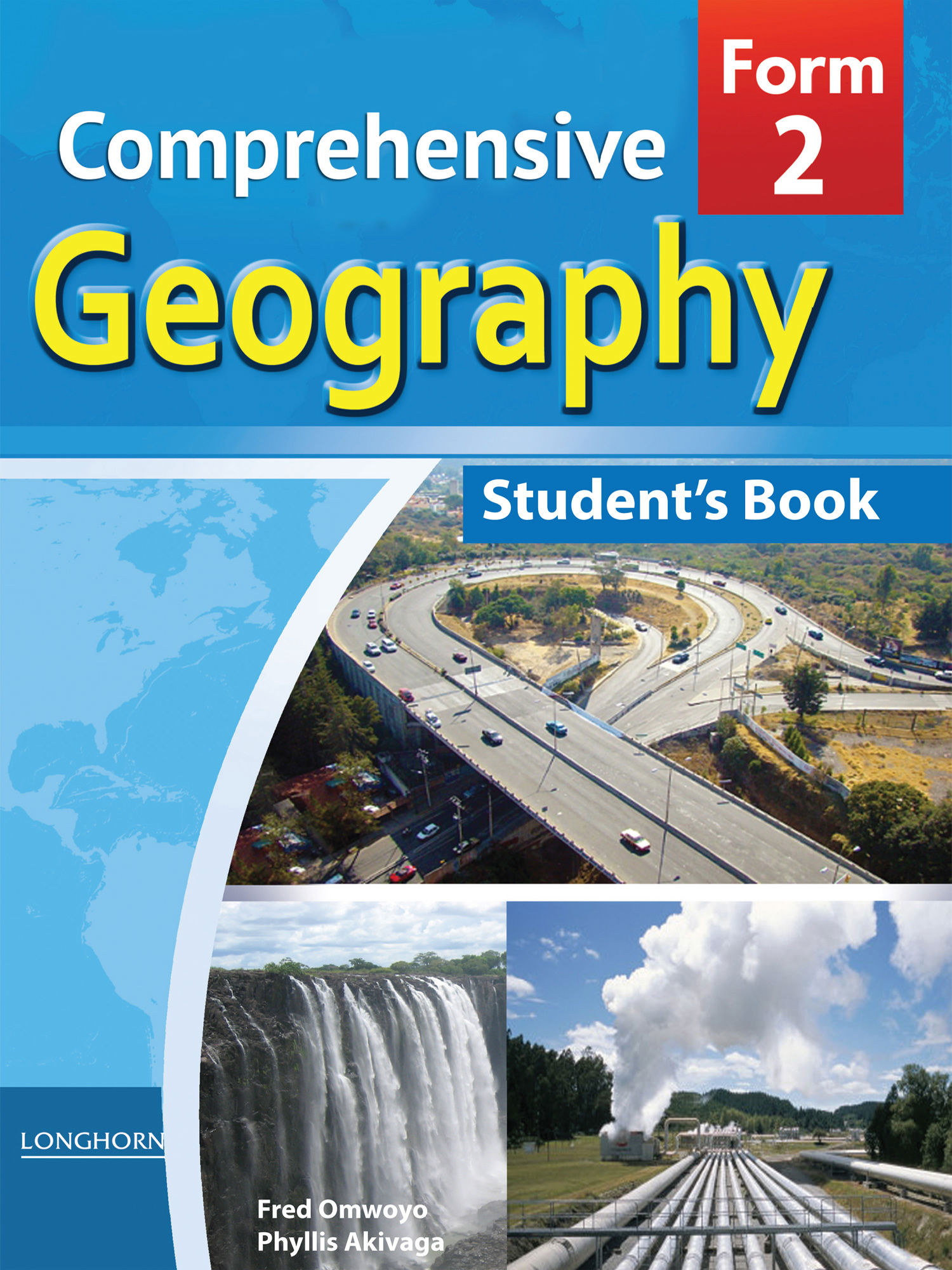
Authors
Fred Omwoyo, Phyllis AkivagaExercises kit’s authors
Fred Omwoyo, Phyllis AkivagaPublisher
Longhorn Publishers
Included in packages

-
The study kit contains 76 chapters and 30 exercises of which 15 are in the chapters and 15 in the task exercises.
-
Authors
Fred Omwoyo, Phyllis Akivaga -
Exercises kit’s authors
Fred Omwoyo, Phyllis Akivaga -
Subject
Geography -
Grade
Form 2 -
Kit's language
English -
Publisher
Longhorn Publishers -
Included in packages
1. Internal Land Forming Processes
Lead |
Chapter |
|---|---|
| 1.1. |
Internal Land Forming Processes
Free chapter! |
| 1.2. | Theories explaining the origin and the present location of continents |
| 1.3. | Work to do |
| 1.4. | Folding |
| 1.5. | Features resulting from folding |
| 1.6. | World distribution of fold mountains |
| 1.7. | Work to do |
| 1.8. | Faulting |
| 1.9. | Features resulting from faulting |
| 1.10. | Formation of a rift valley |
| 1.11. | World distribution of features due to faulting |
| 1.12. | Work to do |
| 1.13. | Vulcanicity |
| 1.14. | Types of Vulcanicity and their resultant features |
| 1.15. | Central vent type and features formed |
| 1.16. | Types of Volcanoes |
| 1.17. | World distribution of features resulting from vulcanicity |
| 1.18. | Significance of vulcanicity to human activities |
| 1.19. | Work to do |
| 1.20. | Earthquakes |
| 1.21. | Types of Earthquake Waves |
| 1.22. | Measurement of earthquakes |
| 1.23. | Distribution and effects of major earthquakes |
| 1.24. | Work to do |
2. Map Work
Lead |
Chapter |
|---|---|
| 2.1. | Map work, Direction and Bearing |
| 2.2. | Modern methods of showing direction |
| 2.3. | Calculation of bearing on a map |
| 2.4. | Location of places |
| 2.5. | Methods of representing relief on topographical maps |
| 2.6. | Work to do |
3. Photograph work
Lead |
Chapter |
|---|---|
| 3.1. | Photograph work |
| 3.2. | Parts of a photograph |
| 3.3. | Interpretation of photographs |
| 3.4. | Interpretation of relief features |
| 3.5. | Interpretation of Climate |
| 3.6. | Work to do |
4. Statistical methods
Lead |
Chapter |
|---|---|
| 4.1. | Statistical methods (Comparative line graphs) |
| 4.2. | Comparative bar graphs |
| 4.3. | Divided bar graphs |
| 4.4. | Work to do |
5. Climate
Lead |
Chapter |
|---|---|
| 5.1. | Climate |
| 5.2. | Factors influencing climate |
| 5.3. | Description of Climate |
| 5.4. | Distribution and characteristics of climatic regions of Kenya |
| 5.5. | Hot climates |
| 5.6. | Warm temperate climates |
| 5.7. | Cool temperate climates |
| 5.8. | Cold climates |
| 5.9. | Arctic climates and Desert climates |
| 5.10. | Mountain and Micro-climate |
| 5.11. | Work to do |
| 5.12. | Aridity |
| 5.13. | Desertification |
| 5.14. | Climate change |
| 5.15. | Impact of climate change |
| 5.16. | Work to do |
6. Vegetation
Lead |
Chapter |
|---|---|
| 6.1. | Vegetation |
| 6.2. | Climatic factors |
| 6.3. | Edaphic factors, Relief factors and Biotic factors |
| 6.4. | Characteristics of major vegetation regions in Kenya |
| 6.5. | Work to do |
| 6.6. | Forests |
| 6.7. | Grasslands |
| 6.8. | Mediterranean and Desert Vegetation |
| 6.9. | Mountain vegetation |
| 6.10. | Field work |
| 6.11. | Work to do |
7. Forestry
8. Extras
Lead |
Chapter |
|---|---|
| 8.1. | Definitions |
